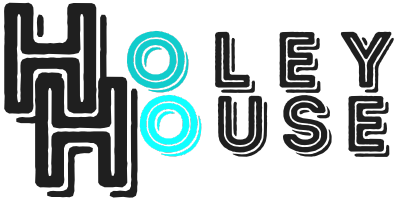There’s a particular kind of wound that comes from being abused by someone who was supposed to love you. Incest isn’t just a violation of the body — it’s a betrayal that pierces the soul. It fractures reality. It poisons innocence. And long after the physical threat is gone, the remnants of that betrayal live on in the shadows of shame and guilt.
These emotions aren’t just feelings. They’re layers — tangled, stubborn, and often hidden so deep you don’t even realize they’re running your life. If you’ve lived through incestuous abuse, you already know this: the shame and guilt don’t just visit. They move in. They rearrange the furniture. They whisper lies into your identity until you believe the worst things about yourself.
But you were never the problem. Let’s say that again — you were never the problem.
The Shame That Swallowed Us
Shame doesn’t walk in announcing itself. It disguises itself as truth. It tells us we’re dirty. It tells us we’re to blame. It tells us not to speak, not to feel, not to be seen. And when the abuse happened inside the family, shame got taught to us like a second language.
Shame as a Secret:
We didn’t just keep secrets — the secrets kept us. We were threatened, silenced, told to protect the very people who hurt us. And so we tucked the truth into a dark corner of ourselves and carried it like a curse. That silence bred a shame so deep it started to feel like a part of who we were. But the truth? That shame was never ours to carry.
Shame in the Flesh:
Many of us walked through life feeling contaminated. Like we weren’t clean — not just on the outside, but in our souls. We felt like damaged goods, and we let that belief dictate who we loved, how we loved, and how we let ourselves be loved.
Shame of Inaction:
Even as children — vulnerable, terrified, groomed — we still found a way to blame ourselves. Why didn’t I stop it? Why didn’t I run? Why didn’t I tell sooner? These questions haunt survivors, even though we know, deep down, we were just trying to survive.
Shame in Sexuality:
Incest leaves fingerprints all over our understanding of sex and intimacy. It distorts desire. It weaponizes affection. And later, when our own bodies crave connection or pleasure, we may feel disgusted or afraid — not because we’re broken, but because our understanding of love and safety was shattered before we had the chance to know what either really meant.
Guilt: The Quiet Killer of Joy
Guilt, unlike shame, doesn’t tell us we are bad — it tells us we did something bad. But after incest, those lines blur until we can’t tell where our responsibility ends and the abuser’s manipulation begins.
Guilt for Their Actions:
Abusers are master manipulators. They make their victims feel complicit — like we invited it, wanted it, or deserved it. It’s sick. It’s calculated. And it works. Survivors often walk around with a backpack full of guilt that was never theirs to begin with.
Guilt for Speaking Up:
For many of us, telling the truth felt like betraying our family. We were told to stay loyal, to protect our abuser, to preserve the illusion of a “normal” family. So when we finally spoke — or even thought about speaking — guilt tore through us. What if I break the family? What if they don’t believe me? What if I destroy everything?
Guilt for Surviving:
Whether we were the only one who was abused or one of many, there’s often guilt for surviving — or not being able to protect others. We carry the burden of what we couldn’t do, instead of honoring ourselves for surviving the unimaginable.
Guilt for “Feeling Good”:
This one is hard to name — but we have to. Sometimes, through the grooming or confusion, survivors may have felt pleasure or affection. And that’s a mind-fuck. But let me say this clearly: your body is not your enemy. The abuser manipulated your reality. The sensations were not consent. That guilt? It’s not yours.
The Unlearning Begins Here
If no one has ever told you — I will: Shame and guilt are not your birthright. They are wounds that can be healed. They are lies that can be unlearned.
Here’s what healing looks like — not all at once, but over time, with courage, and in community:
-
Trauma-Informed Therapy: You deserve a space where your truth isn’t too much. Modalities like EMDR, somatic healing, or parts work (like IFS) can help you release trauma from your body, not just your mind.
-
Community and Connection: Finding other survivors breaks the illusion that you’re alone. When we witness each other, we make the shame smaller — and the truth louder.
-
Education: Learning about trauma, grooming, and abuse dynamics doesn’t just inform you — it liberates you. It helps you see yourself as the victim of manipulation, not the cause of it.
-
Self-Compassion: This one takes time, but it’s the most radical act of resistance. Speak to yourself gently. Honor your pain. Let yourself grieve. Let yourself grow.
-
Voice and Visibility: When you are ready — and only when you are ready — telling your story can be a sacred act of reclamation. You are not a secret. You are not shame. You are a survivor, and your voice matters.
You Are Not What Happened To You
Healing from incestuous abuse isn’t linear. It’s messy. It’s sacred. It’s exhausting. It’s powerful. Every time you choose to get curious about your pain instead of condemning it, you are breaking the generational curse. You are choosing life. You are choosing truth.
You are rebuilding what they tried to destroy — and that is holy work.

0 Comments